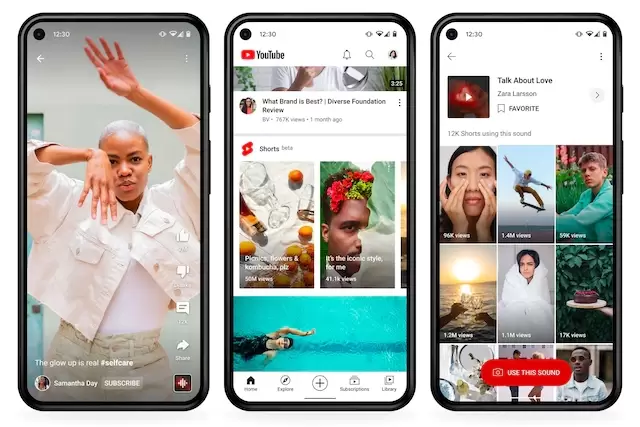So what will Happen with the UMPC?
 Called the "Touch Pack," these enhancements will optimize the touch screen experience. Hubbard. "The small form factor and touch interaction of UMPC means that to have a really great user experience you need to design your UI to really take advantage of those assets." So chances are if UMPCs do take off, we will see differentiated applications over time that take advantage of its touch-screen features and enhancements that Microsoft is building into the units. These are all worthy goals, but the initial UMPC units won't deliver on all of these points at first. While there are many PDAs and PDA/phone combinations that run Windows Mobile (such as the Palm Treo 700w) it isn't the same as running the stock XP OS loaded onto millions of desktop and laptop computers. There are several components to the Touch Pack. Before its release, there were indications from Microsoft staff and from analysts that it would be a very power-hungry device.
Called the "Touch Pack," these enhancements will optimize the touch screen experience. Hubbard. "The small form factor and touch interaction of UMPC means that to have a really great user experience you need to design your UI to really take advantage of those assets." So chances are if UMPCs do take off, we will see differentiated applications over time that take advantage of its touch-screen features and enhancements that Microsoft is building into the units. These are all worthy goals, but the initial UMPC units won't deliver on all of these points at first. While there are many PDAs and PDA/phone combinations that run Windows Mobile (such as the Palm Treo 700w) it isn't the same as running the stock XP OS loaded onto millions of desktop and laptop computers. There are several components to the Touch Pack. Before its release, there were indications from Microsoft staff and from analysts that it would be a very power-hungry device.
PDAs don't run standard Windows OS, and many tablets are too heavy to carry around all the time. Microsoft created the Origami Project to develop (with various hardware and software partners) a new type of computer that falls in-between the size of a typical PDA and tablet PC, uses a standard Windows operating system and costs less than $1000: the Ultra-mobile PC, or UMPC. The other distinction is that the UMPC will be less expensive than the typical tablet. One vendor that hasn't announced any UMPC yet is Motion Computing, although the company sells a variety of tablet PCs in various shapes and sizes. It is smaller than the smallest tablet PCs that are currently available from Motion and Fujitsu, and lighter than the Aopen MiniPC (a desktop model that doesn't include any screen at all). This is very similar to the tablet PCs that are currently on the market: some come with keyboards and all offer support for either pen or keyboard input devices.
UMPCs overall are expected will cost less than most tablets and more than most PDAs. Next, we'll look at who will be manufacturing the UMPC and how much it's likely to cost. As we said earlier, "Origami" was the codename that Microsoft used for the project prior to the announcement at CeBIT, but it has proved so popular that many vendors continue to refer to UMPCs by the code name, and Microsoft continues to use the name in its team blog and community site for the UMPC. Microsoft's goal was to use off-the-shelf displays that are in common consumer electronics devices to keep the costs down. The Motion displays use high-contrast, non-glare, active digitizers, meaning that the pen sold with the tablet is the only way to enter information. For lots more information on the Ultra-mobile PC, check out the links on the next page. This video was more than a year old by the time it got a lot of play in the press. AVS Multimedia can do near instant on by booting into what appears to be XP Embedded (as far as I can tell that is what they are doing) and allows you to play movies, music and photos without requiring you to boot into full XP. This data has been g en erated with the help of GSA Content Generato r DEMO!
No AMD chipsets are in any of the announced plans yet. The UMPC displays are general touchscreens that can work with a finger or any other object for input. They settled on 7-inch VGA displays that had 800 x 480 native resolution and can handle 800 x 600 with some loss of quality. They can also input content with a traditional keyboard, linked either by USB port or wireless Bluetooth connectivity. Windows Mobile requires new versions of applications to be compatible with that OS, and the applications have to take advantage of the smaller screens on these devices. The goal of UMPC is to run off-the-shelf Windows applications, with no medications whatsoever other than supporting the tablet/touch screen features. It has many vague statements, with just a few close-ups of what appears to be the UMPC in various everyday uses, such as mixing music, playing games and drawing pictures. In this article, we'll show you what Microsoft has planned for the UMPC and what is still to come. They used a combination of blogs, messages at various Bill Gates keynotes and a short video showing off a concept of the UMPC that was widely distributed -- unintentionally, it seems.

Post a Comment for "So what will Happen with the UMPC?"